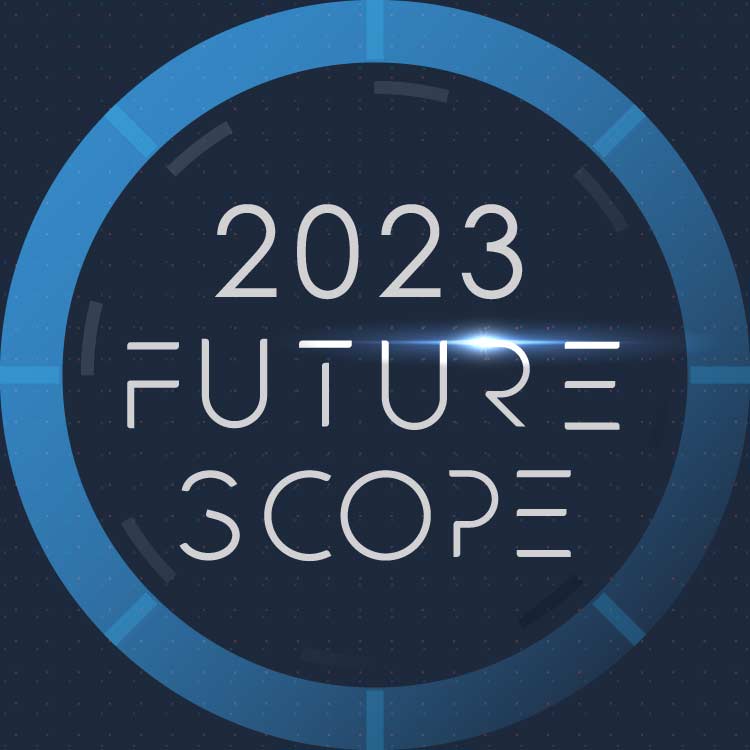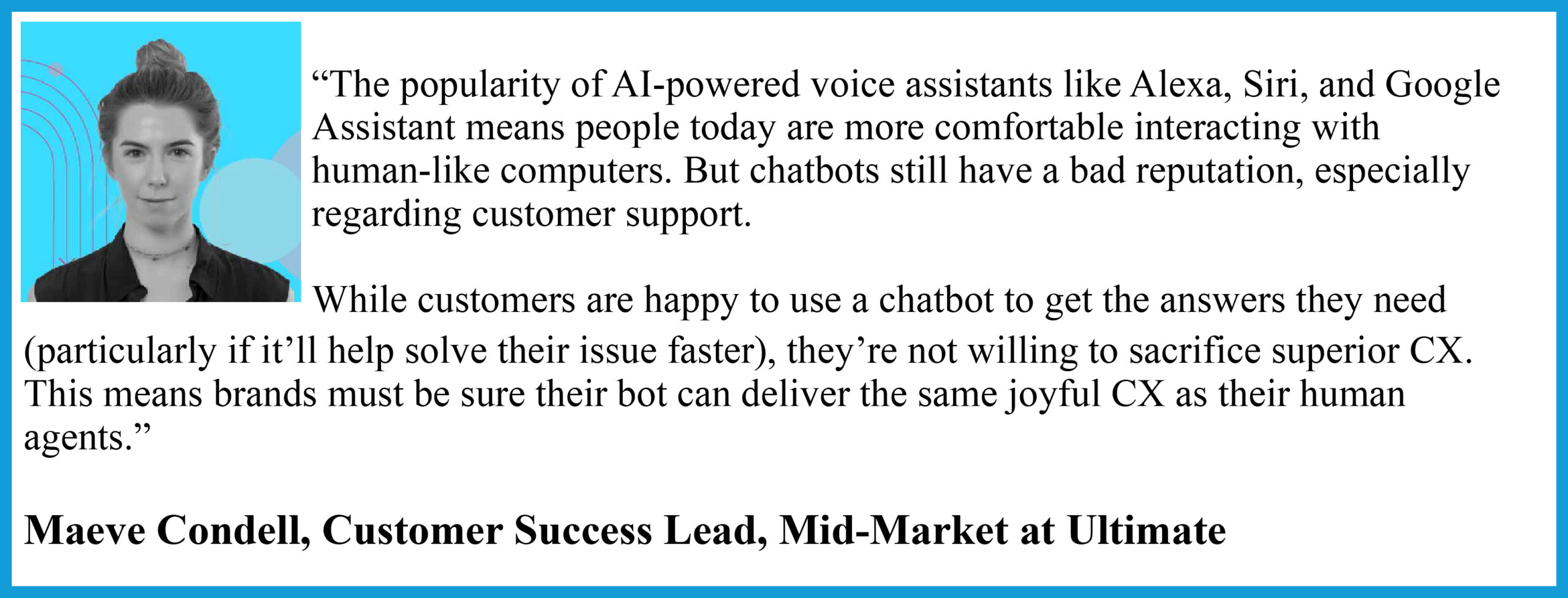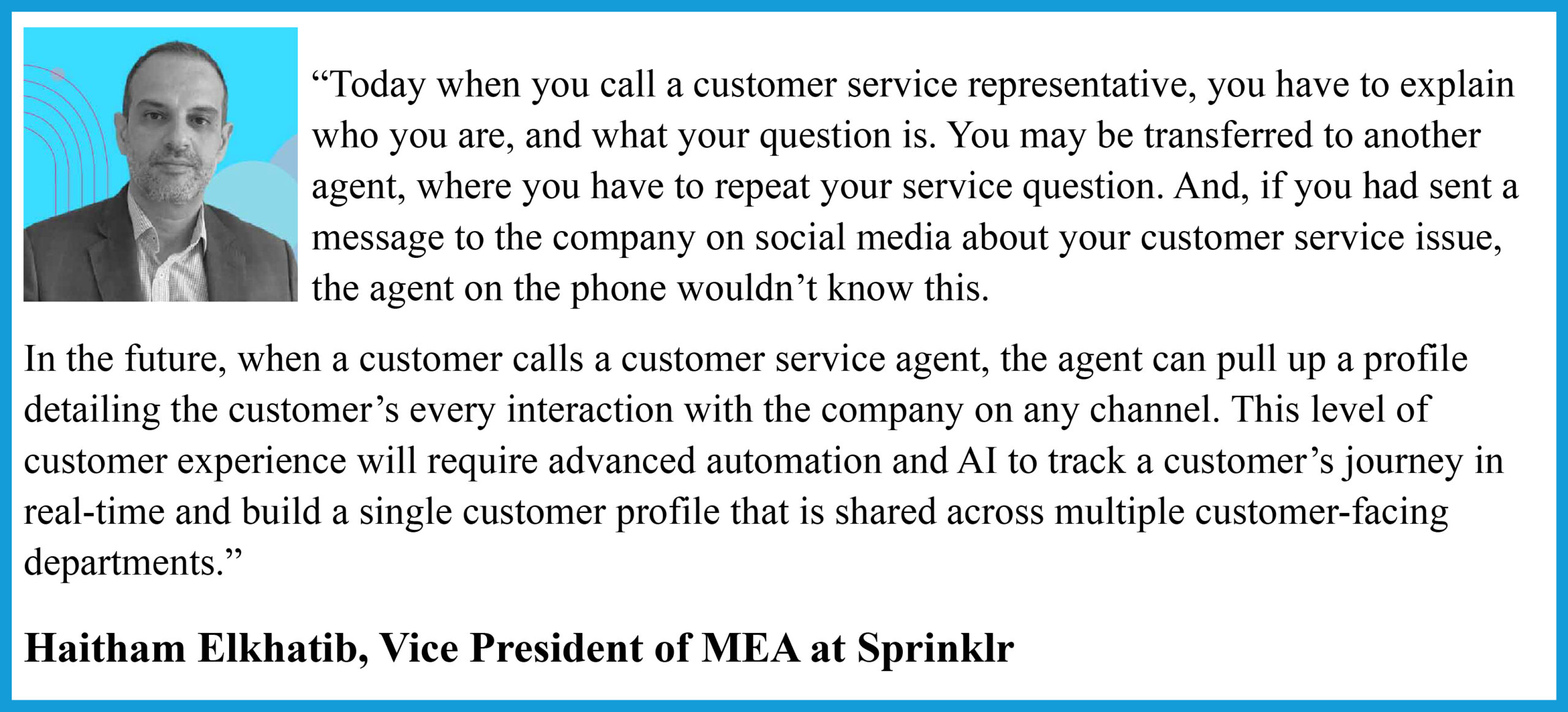Veteran Advice On Creating Future Martech Leaders
2023 FUTURE SCOPE – We spoke to ten marketing and CX veterans who share advice for fresh talent on building a career, using technology to do your job better, and dealing with industry challenges in 2023 Where does marketing stop and tech begin? It doesn’t! When we say “technology in marketing,” the programmatic, AI-enabled automation […]
Topics
What to Read Next
- TripleLift Announces Partnership with Attain to Unify Context and Commerce
- Seedtag Partners with IRIS.TV to Expand Contextual Signals for CTV Targeting
- Magnite, Cognitiv Announce Deep Learning Integration for Real-Time Curation
- Dscout Announces Integration with HeyMarvin
- Comscore Launches Program-Level Capabilities within CCM

2023 FUTURE SCOPE – We spoke to ten marketing and CX veterans who share advice for fresh talent on building a career, using technology to do your job better, and dealing with industry challenges in 2023
Where does marketing stop and tech begin? It doesn’t! When we say “technology in marketing,” the programmatic, AI-enabled automation doesn’t take away from the human investment but only enhances it. Humans have been here long before technology made its way in, and together, they form a power team. In marketing, the people are the brains. Today’s new entrants are tomorrow’s visionaries and leaders.
marketing,” the programmatic, AI-enabled automation doesn’t take away from the human investment but only enhances it. Humans have been here long before technology made its way in, and together, they form a power team. In marketing, the people are the brains. Today’s new entrants are tomorrow’s visionaries and leaders.
One thing is certain; experiencing the dynamic waves of the world of marketing makes up for a prosperous work portfolio that leaves no challenge untouched. How can one venture through this rocky terrain?
With 2023 on the horizon, veterans share advice on successful strategies for winning the market, walking past the most significant hurdles, and the map to building an A+ team.
Focus On The Problem Statement
 In the hoard of trying to satisfy the customer, brands go above and beyond to find that one winning strategy—which keeps evolving—always. Amid this chaos, experts suggest there’s a way hiding under the blankets. Prasad Ramakrishnan, CIO at Freshworks, says the secret lies in understanding the problem statement rather than finding a solution.
In the hoard of trying to satisfy the customer, brands go above and beyond to find that one winning strategy—which keeps evolving—always. Amid this chaos, experts suggest there’s a way hiding under the blankets. Prasad Ramakrishnan, CIO at Freshworks, says the secret lies in understanding the problem statement rather than finding a solution.
“To solve world hunger, you need to know what type of food to cook for people. It is about trying to understand what this particular customer or cohort is looking for,” he adds.
To get your prospective customer’s attention, Ramakrishnan suggests brands should talk about a problem statement and how their tool solves the problem. “And for that, you need to know everything about your audience,” he adds.
 When you know your audience, you can catch the right strings to tug at. Marketing has a direct connection with customer experience. A consumer will have a delightful customer experience if the marketing is targeted and done right. “The emotional side of marketing will always be an effective way of attracting customer attention and building a bond with an audience,” says Alyza Beg, Chief Marketing & Communications Officer at Easa Saleh Al Gurg Group (ESAG).
When you know your audience, you can catch the right strings to tug at. Marketing has a direct connection with customer experience. A consumer will have a delightful customer experience if the marketing is targeted and done right. “The emotional side of marketing will always be an effective way of attracting customer attention and building a bond with an audience,” says Alyza Beg, Chief Marketing & Communications Officer at Easa Saleh Al Gurg Group (ESAG).
Beg emphasises the great first impression that comes from invoking a customer’s feelings. She explains it increases the probability of your target audience to remember, share and act on a campaign.
Technology Is An Inevitable Partner
Automation , to a great extent, has made things convenient and fast. An average consumer expects the same speed and efficiency in every application they use. It could be a food delivery service, a banking facility, or a pharmacy —customers want service that is fast and at the tips of their fingers.
Ramakrishnan says that with consumerisation, the entire world is now in your smartphone. Carrying the scenario to a marketer’s perspective, he explains how a face-to-face interaction makes it easy to look at the customer’s body language and determine what vibes you are getting. “But customers now have a complete digital journey through channels like WhatsApp and other chats. When things have gotten digital, marketers now derive additional insights about the customer that they wouldn’t have gathered in a pre-digital world when customers used to walk into their booth at a trade show,” he adds.
Ramakrishnan explains, “When you interact with them digitally, everything you need to know about that person is available through paid or public sources. Try to see the audience you are talking to and decide what message you are trying to give them.”
 The benefits of leveraging technology don’t end here. Paras Rishi, Senior Manager of Digital Marketing at GMG, says that to deliver a major impact on the business, one should rely on automation and granularity. “Whether you need hundreds of creative banner adapts for your app in a short time or reduce manual effort in your ad optimisation and execution, automation will help significantly improve your team’s productivity in more areas than you can imagine,” Rishi adds.
The benefits of leveraging technology don’t end here. Paras Rishi, Senior Manager of Digital Marketing at GMG, says that to deliver a major impact on the business, one should rely on automation and granularity. “Whether you need hundreds of creative banner adapts for your app in a short time or reduce manual effort in your ad optimisation and execution, automation will help significantly improve your team’s productivity in more areas than you can imagine,” Rishi adds.
However, Beg stresses making the most of one’s martech toolkit but keeping things simple. “Having a multitude of tech platforms will lead to confusion, and nothing good ever comes from over-engineering a solution,” she adds.
Explaining how any technology has a different impact on each brand depending on the industry and stage at which it stands, Rishi says it is vital to be a trendspotter. “It is crucial to evaluate new capabilities and advancements in this extremely crowded landscape but what will set you apart is the ability to analyse or assess the right scale at which your business needs to invest in a new technology to deliver the next wave of hockey stick growth,” Rishi adds.

Voice Of The Customer
 Discussing ways for brands to identify the errors that put customers off, Nate Brown, Senior Director of CX at Arise and Co-Founder of CX Accelerator, uses an analogy to explain how an organisation is like a vehicle. “If the organisation is a vehicle, the mechanism inside that dictates the vehicle’s movement is the engine—that’s where the critical insights are housed, triggering the other events that lead to the car’s operation. Just like an engine uses fuel to move forward effectively, you need to use customer data effectively to move the organisation forward,” he adds.
Discussing ways for brands to identify the errors that put customers off, Nate Brown, Senior Director of CX at Arise and Co-Founder of CX Accelerator, uses an analogy to explain how an organisation is like a vehicle. “If the organisation is a vehicle, the mechanism inside that dictates the vehicle’s movement is the engine—that’s where the critical insights are housed, triggering the other events that lead to the car’s operation. Just like an engine uses fuel to move forward effectively, you need to use customer data effectively to move the organisation forward,” he adds.
“You can accelerate your customer experience by demonstrating that you can listen and learn,” Nate explains that we often make tremendous assumptions. We think we know more about our customers than we actually do; we jump in and start making changes—but those priorities should come from that voice of the customer engine, he adds.
 Sumit Srivastava, Digital and Commercial Officer at Virgin Mobile UAE, says it starts and ends with the customer, and everything in between is the customer’s journey. We must become the customer ourselves—know them, understand them, and build for them.
Sumit Srivastava, Digital and Commercial Officer at Virgin Mobile UAE, says it starts and ends with the customer, and everything in between is the customer’s journey. We must become the customer ourselves—know them, understand them, and build for them.
“In every meeting, design session, and marketing conceptualisation sitting – always start with customer research, feedback, beta tests, surveys, etc. The voice of the customer should be the foundation to which to add innovation to delight the customer beyond their imagination,” Srivastava adds.

CXOs – The New Leaders
 Touching upon what he calls CX superpowers, Christopher Brooks, CX Consultant at Lexden CX, talks about two pertinent qualities a CXO must possess.
Touching upon what he calls CX superpowers, Christopher Brooks, CX Consultant at Lexden CX, talks about two pertinent qualities a CXO must possess.
Being empathetic to all: The CXO needs to step back and understand how customer-centric changes affect those around them. The change that many colleagues go through requires a rewiring of their business idioms. Having empathy and understanding the way the CXO helps individuals work through change is very important. That change currently includes remote working in the main and a new type of colleague engagement. It is key to understand employees’ situations so that the CXO can incorporate these realities through the change programme.
Recognising others is the reward: CSAT scores, plaudits from senior management and securing speaker slots are not what rewards mean to the CXO. The CXO must recognise contributions from others and reward them accordingly. Stakeholder management is vital in customer centricity. Calling it out is critical, whether this is an email, team meet shout-outs, company rewards or promotion. This support and encouragement-led engagers improve engagement.
Brown thinks having a CXO isn’t enough. Instead, an organisation needs a CX change coalition – a group of CX leaders across the customer journey that cares about CX as much as the CX leader does. “Just having a CX team in a corner, trying to impact the giant organisation—it’s impossible for that tiny group to influence that larger body,” Brown adds. He suggests this cohesive group of CX leaders take the core element of the CX team to all varied departments of the organisation. This is the way to put CX at the forefront of a brand’s growth.
On Inflation And Unseen Challenges
Marketers have struggled through 2022 with inflation and its impact. Customers have been hit by the rising prices, consequently affecting sales. Marketing professionals have brainstormed and tried everything the budget allows to keep the figures up during the holiday shopping season.
 “Inflation is affecting lots of people; it’s putting pressure on budgets and making people discerning about where they spend their money,” says Adrian Swinscoe, Customer Service & Experience Advisor at Adrian Swinscoe and Punk CX. The outcome, Swinscoe suggests, is that good customer experience will be really important in the near future. When economic conditions tighten, the significance of service and experience rises, which marketers need to bear in mind.
“Inflation is affecting lots of people; it’s putting pressure on budgets and making people discerning about where they spend their money,” says Adrian Swinscoe, Customer Service & Experience Advisor at Adrian Swinscoe and Punk CX. The outcome, Swinscoe suggests, is that good customer experience will be really important in the near future. When economic conditions tighten, the significance of service and experience rises, which marketers need to bear in mind.
Swinscoe stresses this doesn’t mean always trying to sell more. The question remains, how do you serve more while being empathetic? The answer lies in being more conscious of your customers’ concerns and challenges. “Be a partner with them through this challenging time to help them continue to be with your business,” she adds.
Brown says we aren’t into a complete recession yet and that as we prepare ourselves for what’s coming, both consumers and organisations are assessing the value of relationships. People are asking, “Is this still worth it for me?” Brown explains, “We are sitting there, thinking, is this an organisation that cares about me, that values me? Will my life change significantly if I let this relationship go? Maybe this type of product or service just doesn’t add any value for me.”
Explaining the economic situation, Brown says the customers are the story’s hero, and they’re now entering this tumultuous period where there are all these unknown variables. So, the organisations that have value for the customers can help them navigate through this period—these organisations are the ones still retaining customers and receiving loyalty. “The companies that have put in the work in the past 3-4 years to galvanise relationships with customers are the ones that will come out on top,” he adds.
Career Advice
Coursera, the global online education platform, recently undertook a higher education and employment survey, focusing on a new trend around micro-credentials and professional certificates. There were two types of respondents: students and talent acquisition teams of various organisations.
 Mohamed Kais Zribi, General Manager for the Middle East, North Africa and Turkey (MENAT) at Coursera, shared key insights with us. Students had an overwhelmingly positive response when asked if these certificates designed around specific roles increase their chances of getting hired. “Students today need help to land their first job. These career-relevant professional certificates make them more employable,” says Zribi.
Mohamed Kais Zribi, General Manager for the Middle East, North Africa and Turkey (MENAT) at Coursera, shared key insights with us. Students had an overwhelmingly positive response when asked if these certificates designed around specific roles increase their chances of getting hired. “Students today need help to land their first job. These career-relevant professional certificates make them more employable,” says Zribi.
Coursera also asked employers about their preferences when looking at two students with similar backgrounds, universities and education. “The determining and differentiating factor for them is candidates having additional skill sets that they may have acquired while pursuing their studies, particularly completing professional certificates from the top brands,” he adds.









































































































